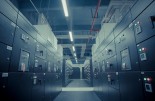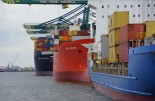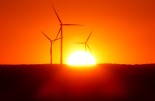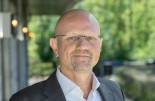Risks associated with green infrastructure (Roundtable Green Infrastructure & Energy Transition – part 2)
Risks associated with green infrastructure (Roundtable Green Infrastructure & Energy Transition – part 2)
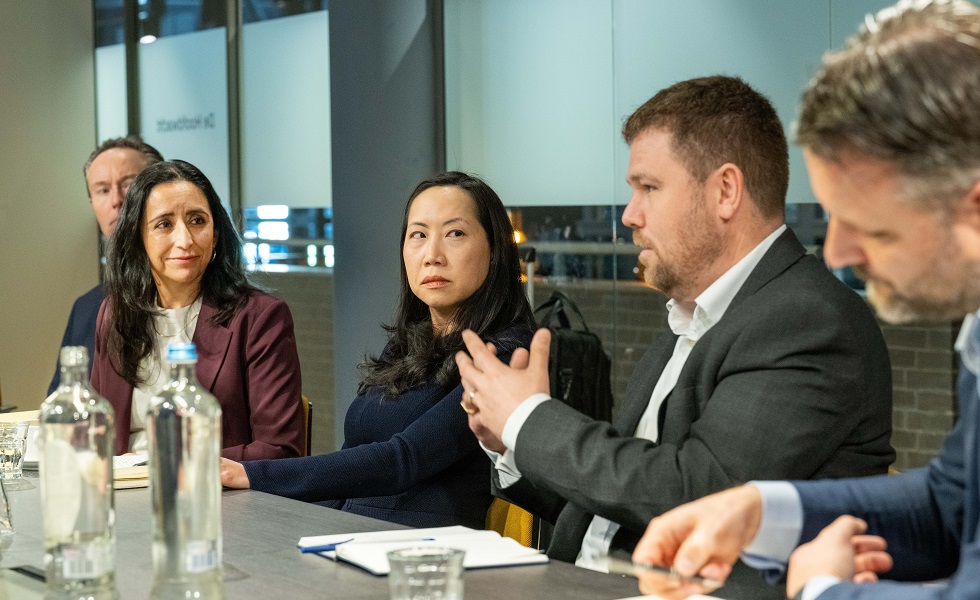
This report was originally written in Dutch. This is an English translation.
What are the risks associated with green infrastructure and how do you weigh them up as an investor? Part 2 of the Round Table on Green Infrastructure & Energy Transition focused on the risks of green infrastructure and how investors can mitigate them.
By Manno van den Berg
This is part 2 of the report. Part 1 can be read here, part 3 will be published on Wednesday 6 August.
|
MODERATOR Rishma Moennasing, Rabobank Investment Office
PARTICIPANTS Angeles Toledo, Blue Sky Group Bart van Merriënboer, a.s.r. real assets investment partners Duncan Hale, Schroders Greenooat Friso Verveld, EY John Carey, L&G Lena Doan, Nuveen Mark Gilligan, AXA IM Alts Remko van der Erf, Intermediate Capital Group (ICG) |
What risks should investors consider when investing in green infrastructure?
Toledo: 'It is becoming increasingly important for pension funds to mitigate risks and avoid negative impacts. Not only because you want to do the right thing, but also because European regulations require double materiality: doing good and not causing harm. Think of the negative impact on biodiversity, flora, and fauna, but also social effects, such as working conditions, the country where projects are built, and the involvement of residents living near wind or solar parks. Circularity is also important, with the proper recycling of wind turbines and panels.'
Van Merriënboer: 'Risks must be assessed and mitigated, including in the supply chain. There are still places in the world where forced labor is used to extract raw materials that end up in solar panels. So you have to go all the way back to the mining company at the beginning of the chain.'
Gilligan: 'We think very carefully about what needs to happen to each of our assets over the next 25 years in order to truly achieve zero emissions. That also means we have to take risks, for example in the area of CO2 capture and storage. Not as a solution for the fossil fuel industry, but as a necessity for a circular economy, such as in waste-to-energy installations, which are difficult to make sustainable.'
Some asset managers employ animal rights specialists. Fascinating. How do you view biodiversity risks?
Hale: 'If you own a lot of wind and solar farms, you have a lot of land at your disposal. That makes biodiversity even more important. In the UK, there is now an incentive policy. A system may soon be introduced in which you can generate income through biodiversity net gain, such as restoring wild nature or attracting bees. You have to factor biodiversity risks into your models before you buy an asset. If you don't, you'll be forced to do so in five or ten years' time.'
John Carey: 'We value infrastructure because of its crucial role in everyday life, but that also means we need to be good stewards. This is now a hot topic in the media, among politicians, and regulators: are infrastructure owners really delivering on the long-term strategy they have committed to?'
Van der Erf: 'The great thing about biodiversity is that you can improve it. In one of the British solar parks managed by a company in our portfolio, the flora and fauna have been restored and animals have returned to the area. That is a clear positive effect. I can hardly imagine that there are still investors who do not include biodiversity as part of their business plan.'
Toledo: 'Europe is really leading the way, both in terms of biodiversity and the do-no-harm principles. But there is still a lot of work to be done; there are still many asset managers who are not doing this.'
Hale: 'One sustainability risk we haven't discussed yet is worker safety. We manage power plants, which are inherently risky environments. It is a moral obligation to be able to let your people work safely. But there is also a financial side: an accident is the quickest way to shut down a power plant. This risk is at the top of our agenda in all board meetings.'
There are also risks involved in building infrastructure, such as price increases for materials. How do you deal with that?
Doan: 'We have seen companies buying materials in advance and storing them in the US in anticipation of import duties. But just as with inflation during Covid and the pressure on global supply chains at the time, companies will probably have to renegotiate many off-take contracts due to higher costs. You are now also seeing more contracts with protection clauses against expected import tariffs.'
Van Merriënboer: 'One of the biggest risks for projects is connecting to the grid. Is it even possible to get the electricity from the grid to the consumers? During the day, there is a peak in renewable energy production. This is not only the case in the Netherlands, but worldwide. This imbalance in the grid is one of the biggest challenges.'
Can't investors play a role in this by investing in the grid?
Van Merriënboer: 'The simple solution is energy storage, for example via batteries. The costs of this have fallen significantly, so it has become economically attractive to invest in it. But what about the grid itself? That remains difficult. It is still largely managed by governments or semi-governmental bodies, and investing directly in it is difficult. But at the back end of the grid – ‘behind the meter’ – there are opportunities, for example through efficiency solutions that can reduce the demand for grid capacity. That is where we, as investors, can play a role.'
Gilligan: 'The big challenge with natural monopoly infrastructures such as grid operators and water companies is that the regulatory model dates back to the 20th century. It was designed to maintain capacity and allow for modest growth. But now, enormous investments are needed to make these systems more sustainable. That requires difficult messages to consumers – but no politician dares to deliver them. If we want clean rivers and better services, we need a tariff increase of 50% to even 100%. The current regulatory system, at least in the UK, is unsuitable for major transitions such as the energy transition and higher requirements for biodiversity and clean water.'
Carey: 'Affordability will become an important issue, at a time when investment needs are very high. There are opportunities to make progress here, although they are not yet structural. Take the grid, for example: there are privatized networks and there are independent projects. These can be used to build a lot of infrastructure, with good discipline and manageable implementation risks. I don't see any obstacle to attracting and deploying private capital, whether through debt or equity. The real question is: who will ultimately pay for it? That's difficult at the moment, given the high cost of living and tight government budgets.'
Gilligan: 'In the UK, you now see water companies explicitly saying in the media during the regulatory rounds: “We want to do more, but the regulator won’t let us.” Perhaps that is a first sign of greater involvement, but it remains a difficult conversation. Ultimately, there are only two groups that can pay: the current generation or the next.'
Van der Erf: 'What I find interesting is that you say: we can do it, the private capital is there... but no one wants to foot the bill.'
Carey: 'Look at digital infrastructure: there is clear demand from users and a willingness to pay for it. That's why you see a lot of investment there. In other sectors, the willingness to pay – whether in the form of government support or user contributions – seems much more limited.'
What is the best channel for investing in green infrastructure? Public or private markets? You can invest in physical assets, but aren't loans also interesting?
Doan: 'In my opinion, private credit is the way to invest in infrastructure. It offers an attractive risk-return ratio with lower default rates and losses than corporate credit. We negotiate terms and build in structural protection through operational and financial covenants. Many of these projects are hedged, either through off-take contracts or commodity hedges. Investors also benefit from the security of collateral in physical fixed assets. They receive interest income and are not dependent on an exit for their return.'
Hale: 'We need both debt and equity for the energy transition. We need investors who are willing to invest in the risky development phase, but also investors who want to get involved in operational projects that generate long-term cash flow.'
Van der Erf: 'As for the public versus private debate, private opens up a whole new universe of companies that you don't have access to in the public markets. So you get more diversification if you can invest in both. In the private market, you often find companies in an early stage, with higher growth potential and potentially higher returns, but also with more risk. The public market tends to have more established companies with greater liquidity, which is often seen as less risky. In the private market, you can also generate real impact by building something new instead of buying something that has already been built by someone else."
Toledo: “From an impact investing perspective, we certainly see a lot of added value in private markets, with parties that demonstrate positive intent and measurability of impact. Listed investments can also be valuable, but private markets can achieve a greater positive impact and are more active in mitigating sustainability risks.'
Why should investors invest in infrastructure debt?
Carey: 'If you look at the new infrastructure that needs to be built, more than half of the capital will have to come from loans for an optimal capital structure. Such loans can offer stable returns, especially in the sub-investment-grade segment.'
Gilligan: 'We are still seeing a lot of liquidity, both on the lending and equity sides. We also provide loans, mainly because of the long maturities. For clients looking for fixed-income or variable-rate instruments, it is attractive to have access to loan tranches with maturities of 10 to 20 years. This allows them to hedge long-term liabilities.'
Toledo: 'Pension funds are looking for investments with a lower risk profile, a long-term horizon, and a certain degree of liquidity. From that perspective, loans are attractive because you are financing projects in the operational phase, which typically has stable cash flows.'
Van der Erf: 'But how do you view additionality when you talk about impact in infrastructure debt?'
Toledo: 'Good question. To achieve impact, you basically need shareholders. Shareholders are the ones who provide guidance, because as owners they have more influence and can implement best practices. But you can also set impact targets and steer towards them with loans.'
Carey: 'You can also exert influence through loans. Certainly in project financing or highly structured corporate finance, you see that borrowers gradually need adjustments or waivers. As a provider of debt capital, you then have a say. Sometimes lenders may be a little too modest about their role in the long term.'
Doan: 'Private credit certainly offers good opportunities for active involvement. For example, we include KPIs in our loan agreements: targets for reducing greenhouse gas emissions or improving employee safety. And we ensure that we work closely with private equity sponsors to achieve sustainable goals.'
|
Rishma Moennasing Rishma Moennasing is Lead Investment Funds & Mandates bij Rabobank Investment Office en is als projectleider SFDR, Mifid ESG en EU groene taxonomie verantwoordelijk voor de implementatie van alle groene EU-regels voor beleggingen. Ze werkt sinds 2008 bij de Rabobank en had daarvoor een vergelijkbare functie bij ABN AMRO Private Banking & Asset Management. Ze is tevens actief voor de VBDO. John Carey John Carey leidt het Infrastructure Debt-team van L&G Real Assets in Europa. Voordat hij daar in mei 2023 in dienst trad, werkte hij bij IFM Investors. Daarvoor bekleedde hij sinds 2001 een aantal functies in de infrastructuursector bij respectievelijk Barclays, KPMG en Moody’s op het gebied van bankieren, advies en kredietratings. |
|
John Carey John Carey leidt het Infrastructure Debt-team van L&G Real Assets in Europa. Voordat hij daar in mei 2023 in dienst trad, werkte hij bij IFM Investors. Daarvoor bekleedde hij sinds 2001 een aantal functies in de infrastructuursector bij respectievelijk Barclays, KPMG en Moody’s op het gebied van bankieren, advies en kredietratings |
|
Lena Doan Lena Doan is Managing Director Energy Infrastructure Credit bij Nuveen. Ze heeft ervaring in investeringen binnen kapitaalstructuren, energiemarkten en beheersvennootschappen. Voordat ze bij Nuveen in dienst trad, werkte ze bij HPS Investment Partners in privaat krediet en hernieuwbare energie. Daarvoor was ze actief bij Carlyle en bij Denham Capital. Ze begon haar carrière in investment banking bij Citi, en later als Trader bij Calpine. |
|
Remko van der Erf Remko van der Erf is Managing Director bij Intermediate Capital Group (ICG) en verantwoordelijk voor de Benelux-regio. ICG financiert sinds 1989 middelgrote Europese bedrijven en zette in 2018 een Europese Infrastructuur Equity-strategie op, gevolgd door een strategie gericht op de regio Azië-Pacific in 2022. Van der Erf heeft in zijn carrière ruime ervaring opgedaan in alternatives bij Robeco en Van Lanschot Kempen. |
|
Mark Gilligan Mark Gilligan is verantwoordelijk voor het infrastructuur equity-platform van AXA IM Alts. De beleggingsstrategie is gebaseerd op de overtuiging dat klimaatverandering het grote probleem van deze eeuw is en richt zich op het ontwikkelen, bouwen en exploiteren van infrastructuur die geschikt is voor of aanpasbaar is aan een duurzame ‘net zero’ wereld. Belangrijke thema’s voor de strategie zijn decarbonisatie, elektrificatie en digitalisering. |
|
Duncan Hale Duncan Hale werkt sinds 2022 bij Schroders Greencoat. Hij werkt binnen de private markets business, met een bijzondere focus op het managen van Schroders Greencoat’s productaanbod in de vermogensbeheer- en defined contribution-markt. Voordat Hale bij Schroders Greencoat in dienst trad, werkte hij bij WTW, waar hij leiding gaf aan hun secure income capability. |
|
Bart van Merriënboer Bart van Merriënboer is Senior Portfoliomanager Infrastructuur bij a.s.r. real assets investment partners. Sinds 2007 houdt hij zich bezig met de selectie, monitoring en implementatie van vermogensbeheerders en portefeuilleconstructie en -beheer voor institutionele beleggers. Van Merriënboer is ruim 30 jaar werkzaam in de financiële industrie, ooit begonnen met derivaten en fixed income, en via aandelen en hedge funds nu werkzaam op het gebied van private assets. |
|
Angeles Toledo Angeles Toledo is werkzaam bij Achmea Investment Management en is een ervaren impactbelegger en adviseur voor pensioenfondsen. Tot voor kort was ze Hoofd van het ESG en Impact Investmentsteam bij Blue Sky Group. Daarvoor werkte ze als Fondsmanager van het Triodos Groenfonds. Toledo is meerdere keren genomineerd voor de Top 50 Women in Sustainable Finance in the Netherlands. |
|
Friso Verveld Friso Verveld is Partner bij EY. Hij zet zijn expertise in projectfinanciering en investeringen in duurzame energie in om financieringen te faciliteren voor duurzame infrastructuur en de energietransitie. Hij richt zich op het creëren van win-win situaties voor alle betrokken partijen, met als doel de groene economie te versnellen. |










